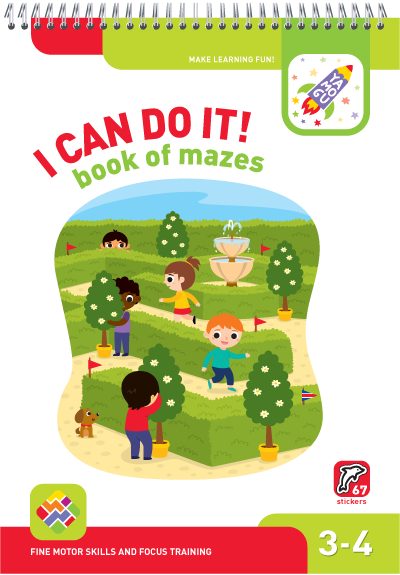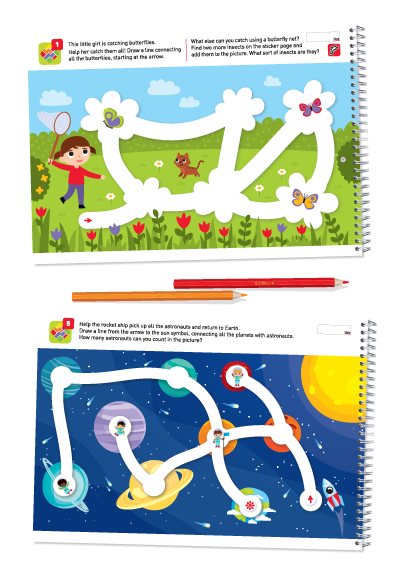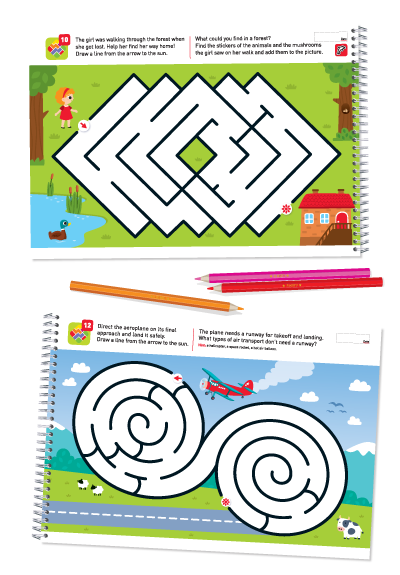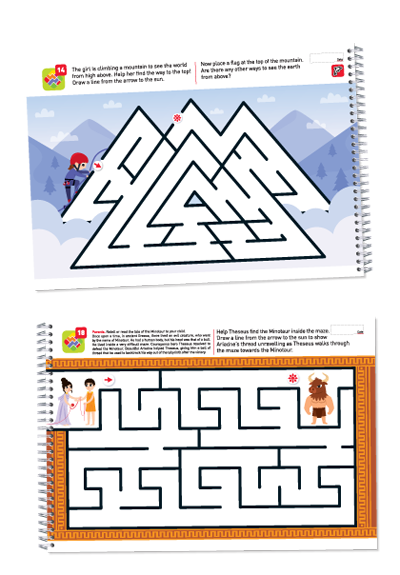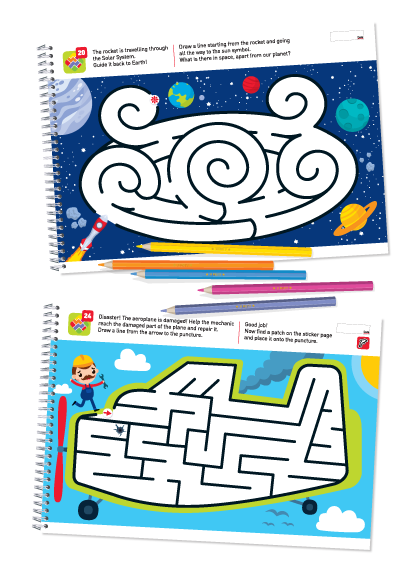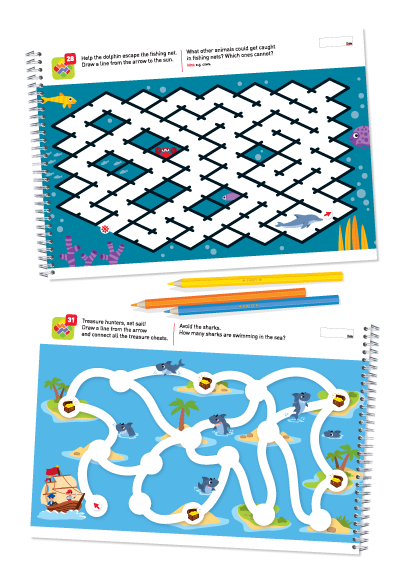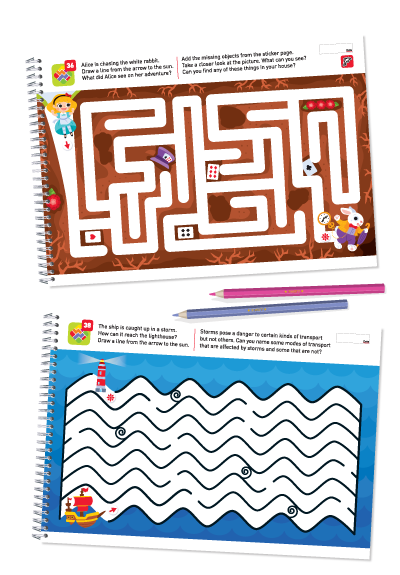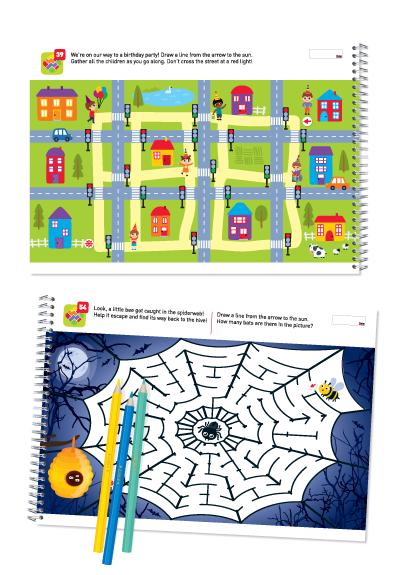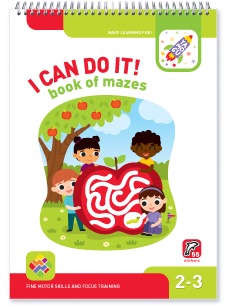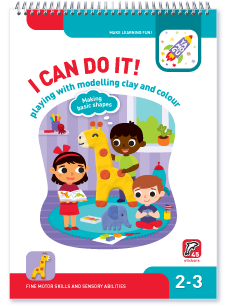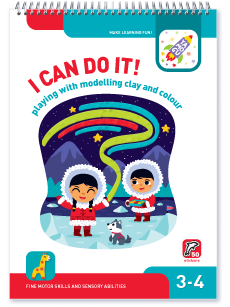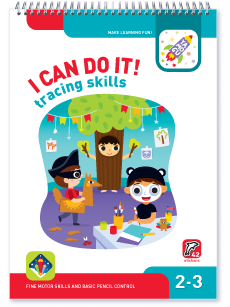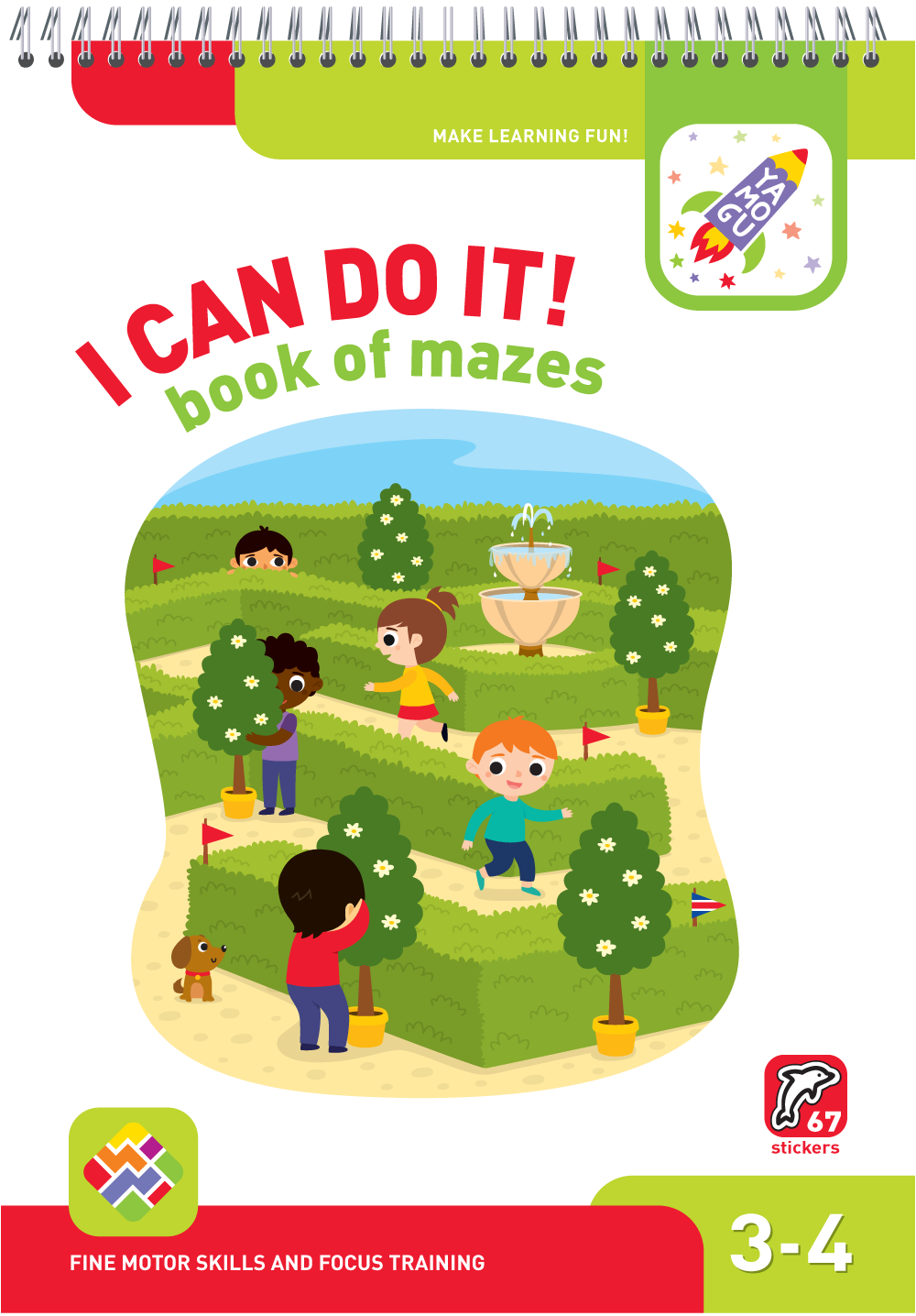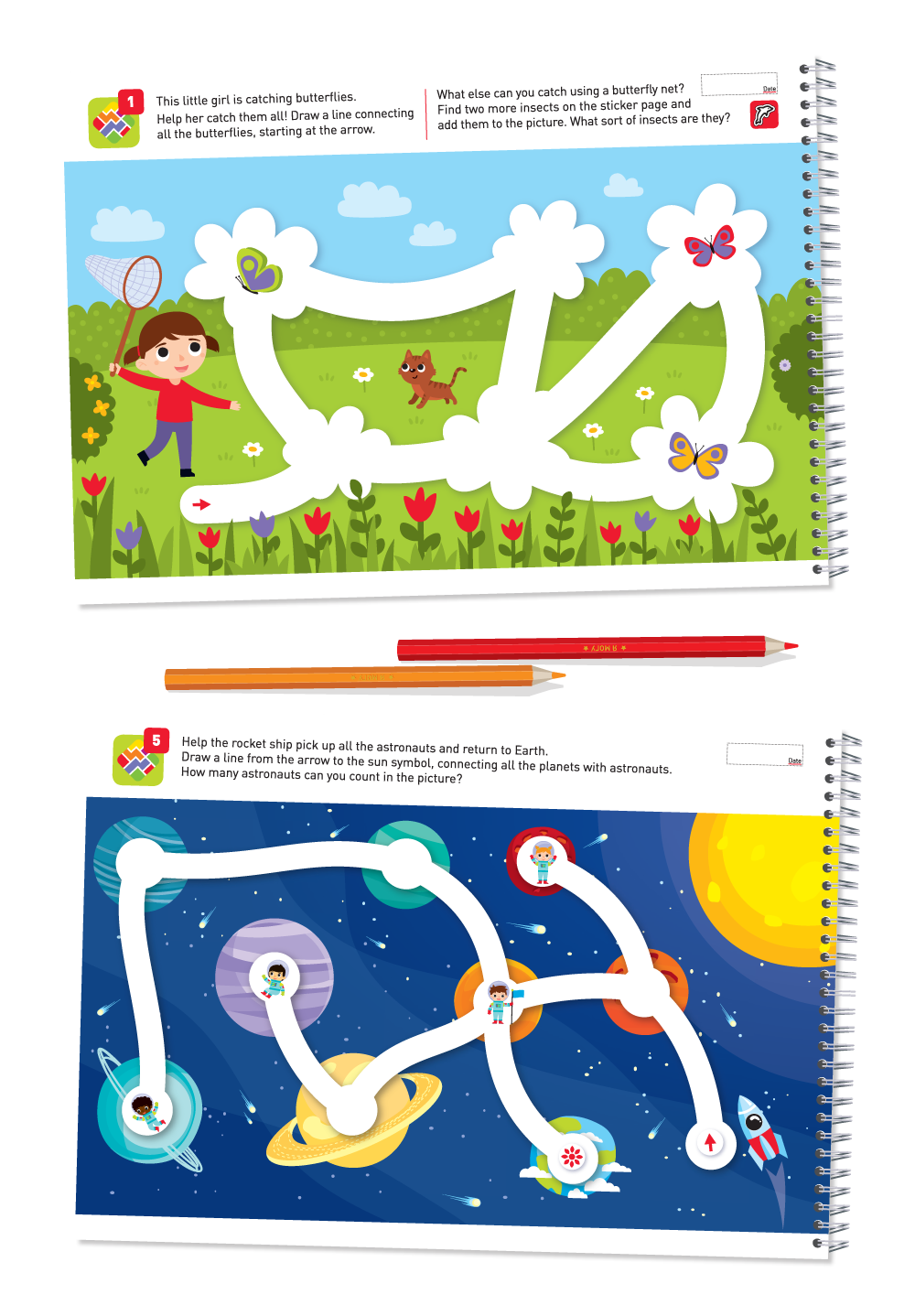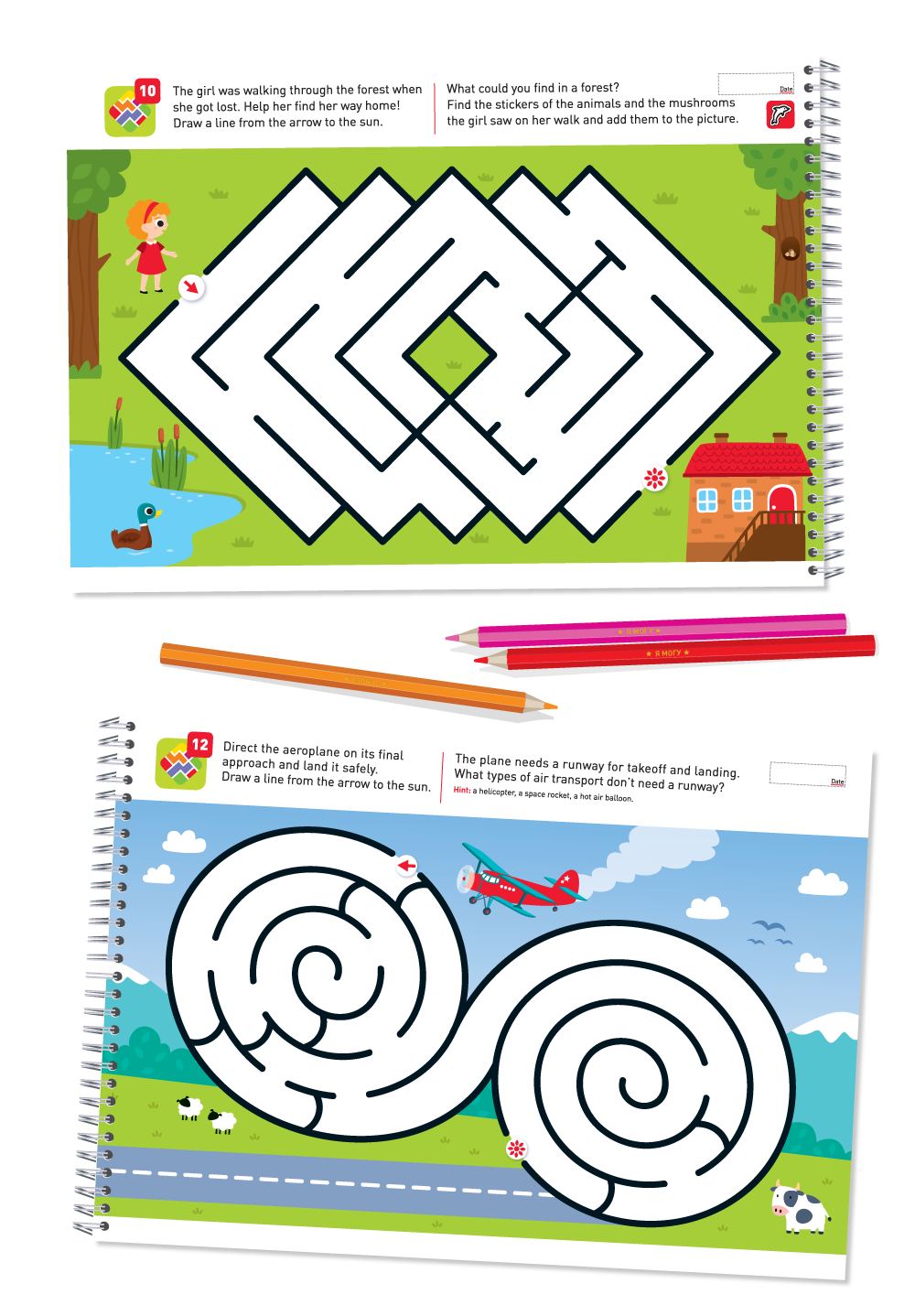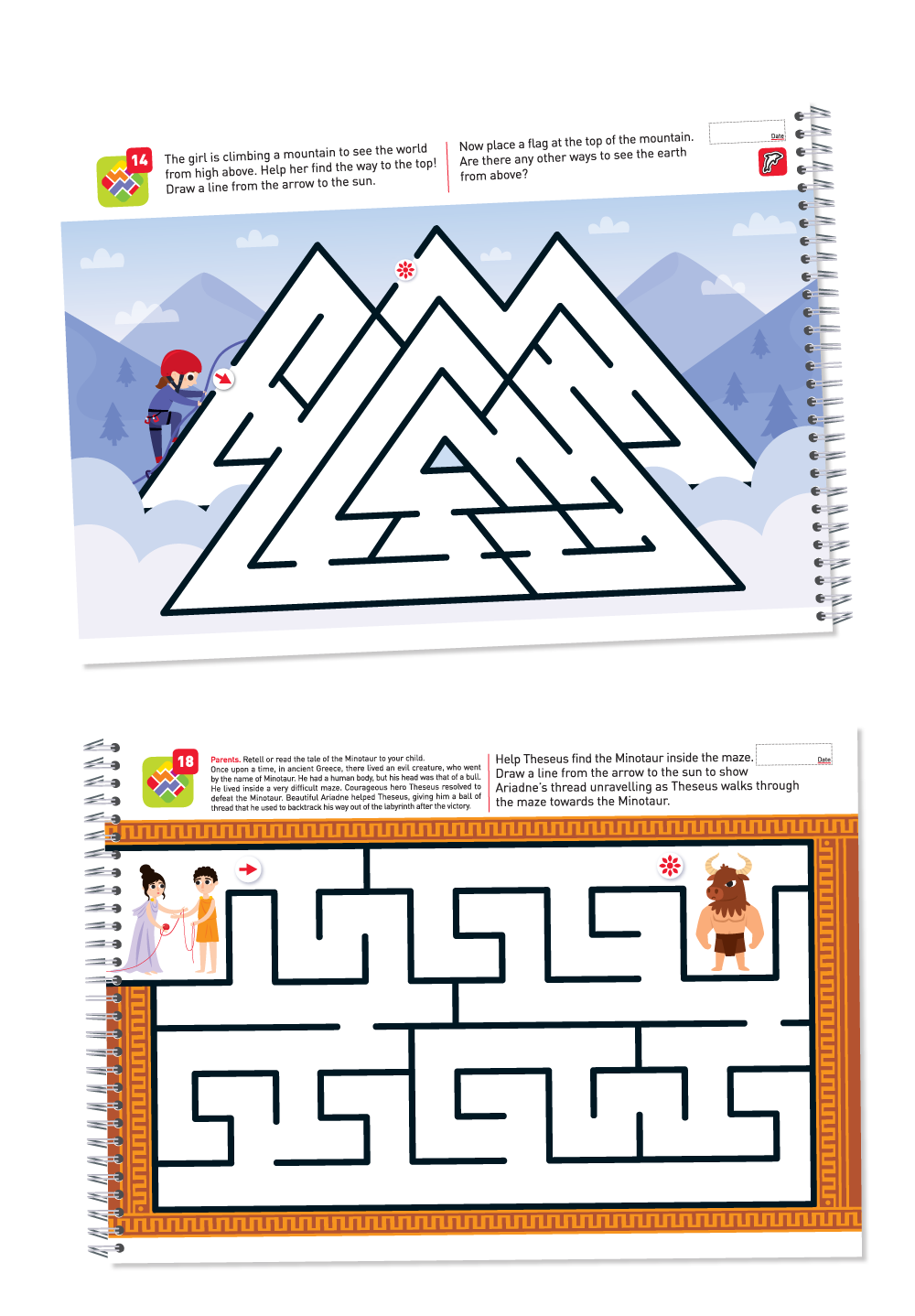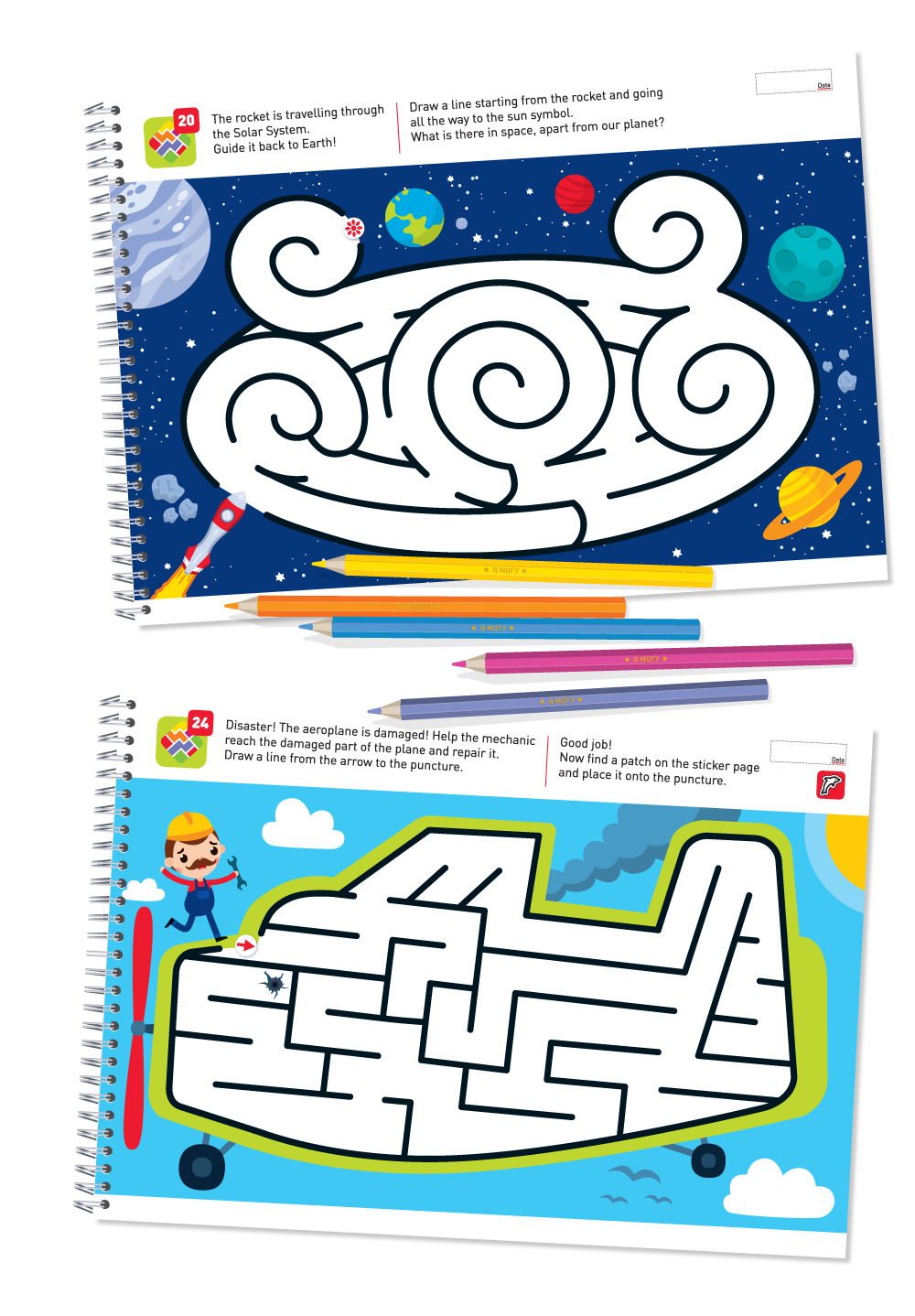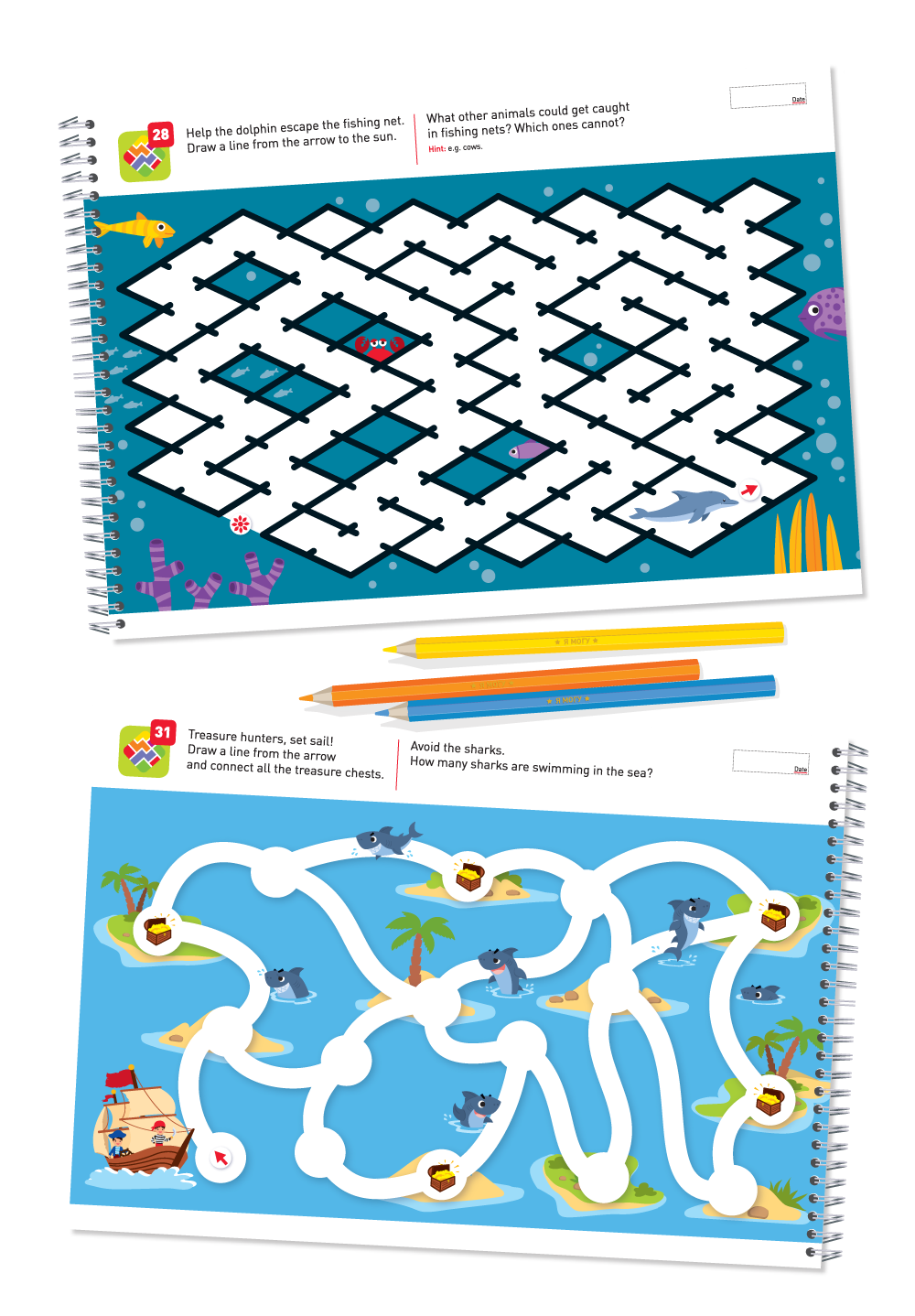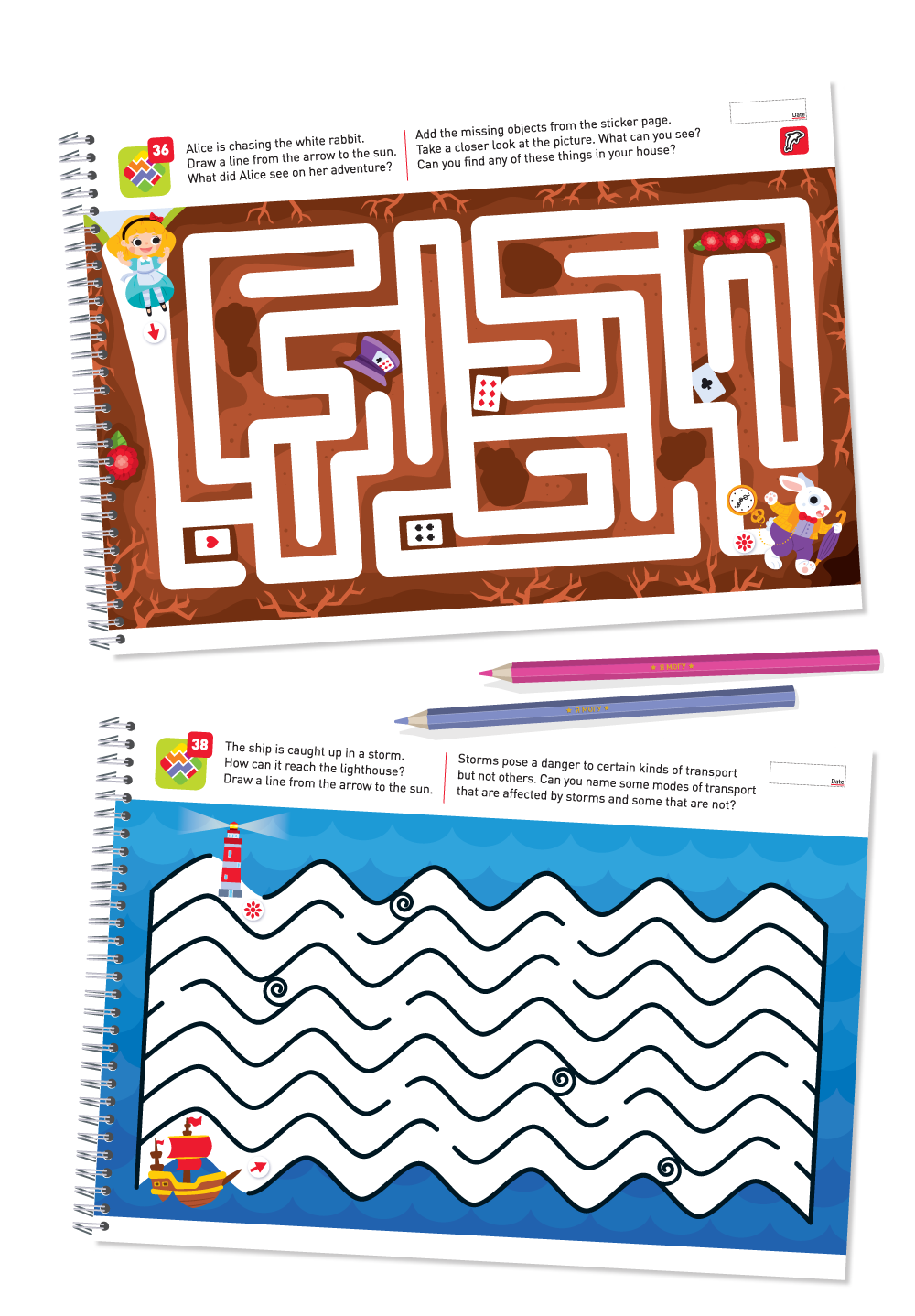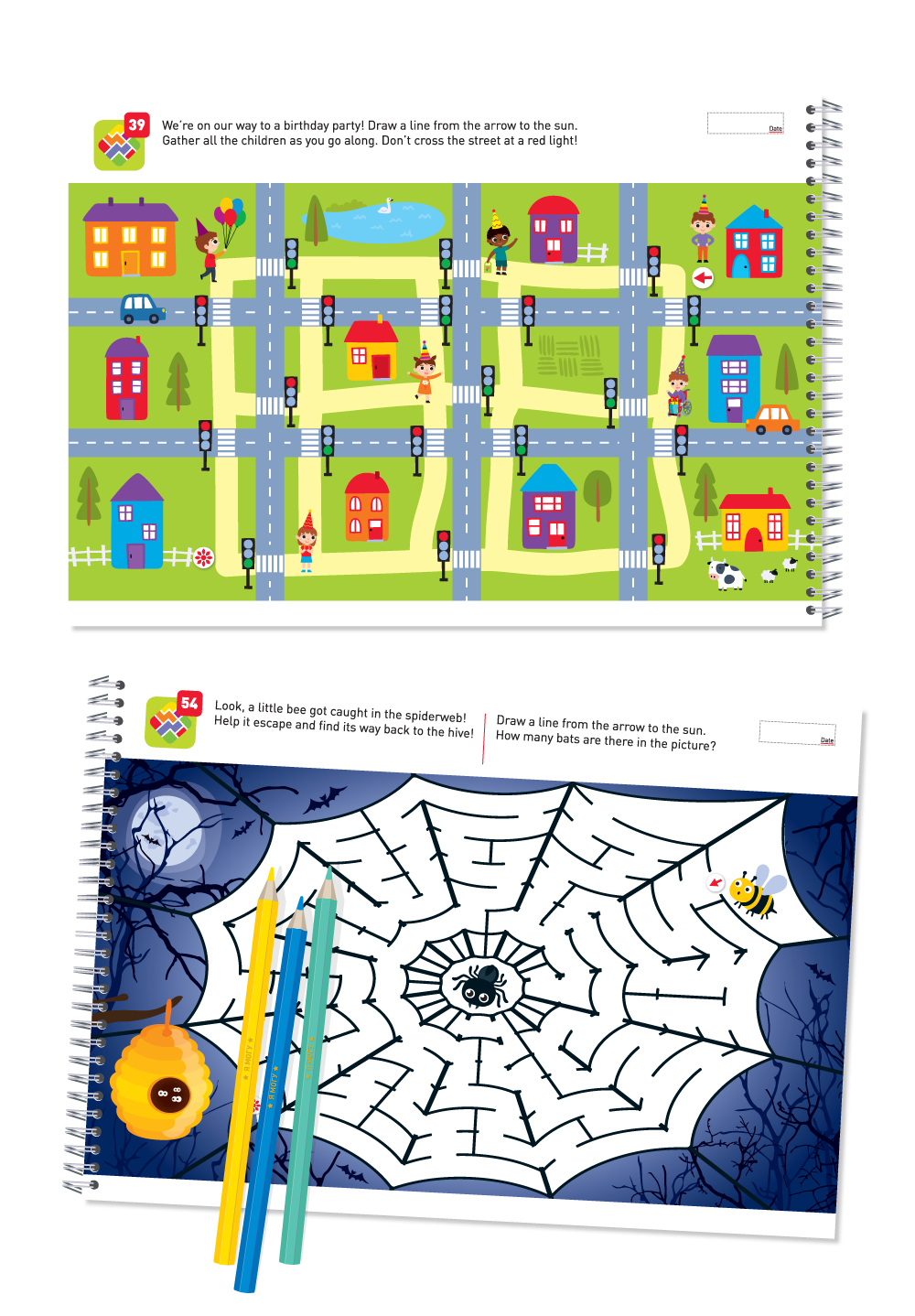I can do it! Book of Mazes. Age 3-4
Includes 63 exciting mazes:
- fun and engaging storylines
- prepares your child’s hand for writing
- trains attention skills and diligence
- develops a broader way of thinking
- teaches resilience and not to give up when confronted with obstacles
- 67 reusable stickers
- convenient format and open flat spiral binding
The book is printed on thick, matte paper – the paper texture is a little rough. It's ideal for drawing beginners.
I can do it! Book of Mazes. Age 3-4
- Matte coated paper
- 67 laminated stickers (1 page)
- 64 pages
- Spiral binding
- Weight: 300g
- Size: A4
- Written by Natalya Lyalina, Irina Lyalina, Evgenia Lazareva
- Illustrated by Evgenia Salikhova, Anastasia Gileva, Olga Utchenko
- Translated into English by Natalya Plotnikova
- Edited by Nadia Stulock, Lucinda Hawksley
- Proofread by Manda Waller
About the Activity Book
When a child goes through mazes, they don’t just learn to draw lines. They are also developing their logic and concentration skills, and are learning to not give up in the face of difficulties.
Activity with a storyline
Each of our mazes is a mini adventure! We'll fly to new planets on a rocket, go down to the bottom of the ocean and look inside a fairy tale castle... Your child will want to pick up a pencil and start working!
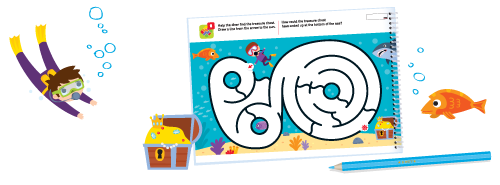
Gradual increase in difficulty
What determines the complexity of a maze? Not just its length! A maze has dead ends and you need to be able to get back from them. In the short, simple mazes at the beginning of the book, there are only a few dead ends. By the end of the activity book, your child will have to work hard to find the right path!
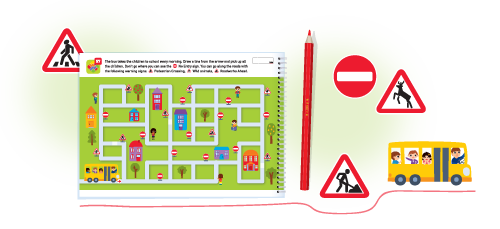
Developing logic
In half of the mazes, the activity is not just about getting to the finish, but also involves solving a problem – for example, choosing only the paths where the good dinosaurs are sitting. Such tasks appeal to children and are useful for developing their logic skills and attention spans.
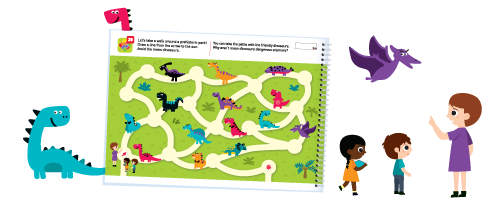
Lots of stickers
All children love stickers, because they allow them to become one of the characters in an adventure and to take part in a story! There are 67 of them in this activity book, and we also include some sticker games: make a snowman, assemble a dinosaur skeleton. It's exciting!
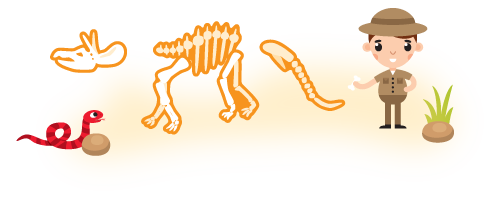
Interesting topics
We are not afraid of new topics: Greek myths, speleology, the structure of our planet... Children have a keen sense of whether something is interesting for their adult helper so let's do it with passion and excitement!
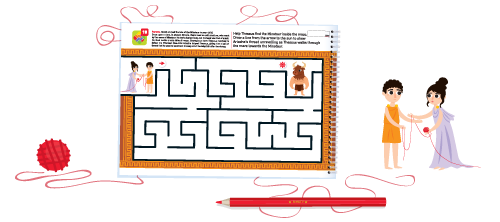
Spiral binding
We have carefully designed the convenient spiral binding so that the book will open flat and will not bend or get in the way of activities. This is especially important for young children.
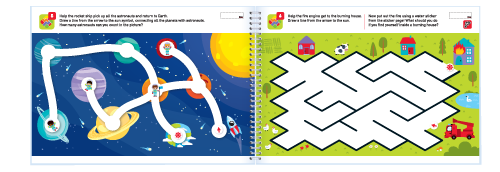
And at the end – a medal!
Here is the medal your child will receive for perseverance and excellent work!
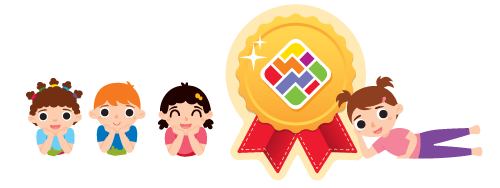
Useful Tips
Holding a pencil
The pencil should rest on the middle finger while the thumb and the index finger hold it in place. Your child should not grip the pencil too tightly.
The ring finger and the little finger may stay inside the palm or rest at the base of the thumb. If your child doesn’t want to hold the pencil correctly, don't worry. They will definitely get used to it. From time to time, remind them to take hold of the pencil as shown. Explain that this will prevent their hand from getting tired.
Choosing the right pencil
If your child doesn’t have much experience using pencils or crayons, we recommend choosing triangular-shaped writing utensils. This particular shape naturally enforces a proper grip.
Hexagonal or round crayons, or soft thick pencils, will suit more experienced children. Try different types of crayons and pencils to choose the one that is the best fit for your child.
What else to draw?
-
Our series includes "I can do it! Book of Mazes" activity books for children aged 2-3 and 3-4.
-
With the help of "I can do it! Playing with Modelling Clay and Colour" activity books for children aged 2-3 and 3-4, your child will practise modelling with clay, drawing simple pictures and colouring.
-
"I can do it! Tracing Skills" activity books for children aged 2-3 and 3-4 will help prepare your child's hand for writing, and will also improve coordination and diligence.
